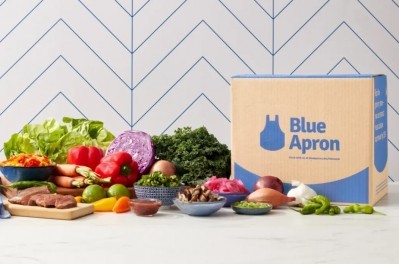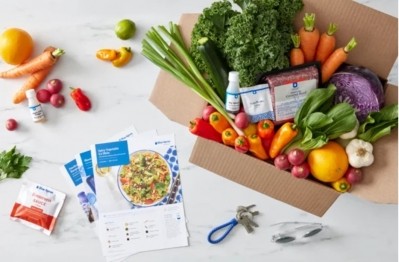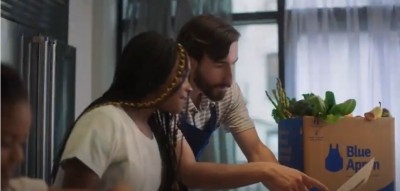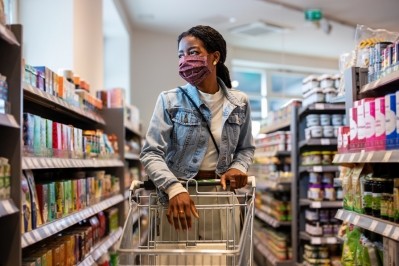Blue Apron CEO: “The pandemic reset people’s expectations about what meal kits are … pretty dramatically”
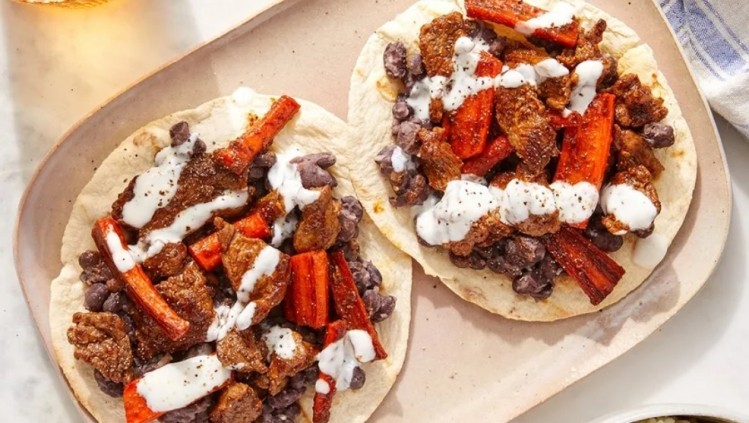
During the pandemic, consumers flocked to meal kit delivery services as a safe way to stock their kitchens and entertain themselves while staying at home – reversing the economic trajectory of the category, which was struggling to retain consumers and seeing sales slip before the outbreak.
According to research by Order Groove, consumer demand for subscriptions across categories skyrocketed in 2020 with year-over-year enrollment surging 48% and subscribers increasing 27% over the prior year. While food and beverage subscriptions did not perform as well as pet and home care, it still spiked 35% in the year with the average order reaching $52, according to the research.
A closer look at meal kits by the US-based market research firm Grand View Research revealed increased consumer engagement in the space during the pandemic is helping to fuel and expected 12.8% compound annual growth rate through 2027, which should bring the market to $19.92bn. This growth level may not be as high as the 20% enjoyed by the segment in 2018, but it is significantly higher than the 5.8% previously predicted for 2023 by Packaged Facts before the pandemic reignited consumer engagement.
Top drivers of meal kits reach far beyond convenience
The segment’s about-face may have been jumpstarted by the pandemic, but as Blue Apron CEO Linda Findley explains the segment’s ability to sustain sales and consumer engagement above pre-pandemic levels speaks to a fundamental shift in consumers’ perception of the category and how market leaders are engaging with them.
“The pandemic reset people’s expectations about what meal kits are … pretty dramatically” so that consumers now have a more realistic and better understanding of the benefits of the service, she said.
She explained when meal kits first launched, many consumers had “misconceptions” about the service that may have led them to either dismiss meal kits or try them once or twice and then drift away.
For example, she said, pre-pandemic many people perceived meal kits as “pure convenience,” and “something you do if you don’t want to go to the grocery store,” which may have set unrealistic expectations about the required level of engagement to get dinner on the table and caused them to overlook other benefits.
But, she added, loyal meal kit consumers return over and over not for the convenience of home delivery, but because they offer relief from planning fatigue, a way out of a cooking rut, and because they offer sustainability benefits.
That last reason might sound counterintuitive given the amount of packaging that comes with most meal kits – a factor that has been a huge turnoff for many consumers historically. But Findley explained that during the pandemic many consumers took a more holistic view of the environmental impact of the food system.
“The sustainability of meal kits was definitely a misconception before the pandemic and many people thought that the convenience they offered came with a trade off of more waste. And the reality is, when you look at the differences between the grocery supply chain and meal kits is the reduction in food waste,” she said.
In addition, she argued, people are learning more about the recyclability of packaging – and industry is also making improvements, including Blue Apron, which announced in July that by the end of 2025 its meal kit boxes would be 100% recyclable, reusable or compostable and that it is striving to use 75% post-consumer recycled content by the end of 2025.
Combined with meal kit providers’ direct supply chain, Findley argued that meal kits have about a 25% lower carbon footprint than going to the store, “and in many cases give you better access to quality ingredients as well.”
‘The segment as really moved away from a convenience play into more of a lifestyle’ play
These shifts in how consumers view meal kits is pushing Blue Apron and the category at large to continue to evolve, Findley said.
“The segment has really moved away from a convenience play into more of a lifestyle, sustainability and overall-health play when it comes to thinking about the holistic aspects of health – not just the calories, fat and carbs and very traditional concepts of it, but really the idea of connection, community, creation and empowerment,” she said.
To this end, Findley said, Blue Apron is evolving its business model and offerings to better meet these new needs and in doing so reduce the high churn rate that plagued the industry pre-pandemic and still continues to dog some players, including Blue Apron, which saw customer number drop slightly in the second quarter of this year to 375,000 vs the previous quarter's 391,000. This number is well below were things were a few years ago, when the company served almost a million customers. The decline mirrors a drop in revenue, with Blue Apron posting 5% a net revenue loss of $18.6m year-over-year to $124m in Q2.
For example, she said, over the past two years Blue Apron has shifted from focusing on a “giant acquisition funnel,” like so many meal kit providers did when the segment was emerging, to focusing on “higher quality customers and engaging with them with products that are designed to retain them longer.”
Blue Apron’s consumer base “hasn’t changed a ton,” with childless couples or couples with very small children making up its core, Findley said. But, she added, “we’ve been adding customers who are empty-nesters,” and who tend to be “better traveled and have more adventurous taste in food.”
Also, Blue Apron is welcoming more singles into the fold, most of whom buy the kits for two-people and use the second serving as leftovers at lunch.
New products target new consumer segments
Beyond this, Blue Apron is “seeing a little bit of an expansion in the demographic with the introduction of new products and others in the pipeline that will launch near the end of the year,” Findley said.
“We are specifically targeting our product roadmap to offer additions and customizations and amplifications of our menu that appeals most to our highest value customers within a segment. So, for example, when you have families with kids who are using Blue Apron, one of the biggest things they are looking for is extra protein because their kids are growing and need more than a normal portion for a grown adult. So, we added that feature and the ability to swap and customize the protein,” she said.
While Blue Apron offers some customization, bundles and add-ons, Findley said the company is being careful not to add too much choice so that the question of what to make for dinner becomes complicated again.
The company also now offers more premium ingredients, such as scallops and lamb, to appeal to more adventurous eaters, and meal plans that fit different lifestyles, such as its Wellness 360 plan, which focuses on health without restriction, Findley said.
Looking forward, she said, the company will continue to add variety, add-ons and meal customization options that will focus on expanding its audience.
“So, adding things that give you a broader set of individuals that might be interested in the meal kit while still staying true to who Blue Apron is and attracting those high value customers,” she said.
Blue Apron consumers want to stay at home even as economies reopen
Ultimately, Findley said she believes that these shifts in how Blue Apron operates will help it stave off a mass exodus of subscribers as the threat of the pandemic continues to ebb and people can safely return to activities they put on hold, such as eating out.
“We would expect coming out of the pandemic that we would see some decrease in frequency, meaning people are traveling or have expanded food options as things quote unquote open back up again,” Findley acknowledged.
But, she added, after a year and half of learning new cooking skills, “people have actually seen the benefits of cooking at home, they have learned a lot of skills, and so it is easier for than it used to be fore them to enjoy meals at home.”
She also noted that consumers are eager to continue “leveling up their skills” and spend time with family and friends in the kitchen and around the table at home.
“People are saying their lives have permanently changed and they like having family time and it is a bigger priority for them now that they have reconnected during the pandemic – and they don’t want to give that up,” Findley said.
And with meal kits, like Blue Apron, they don’t have to and they aren’t – as illustrated by the company’s key customer metrics, such as revenue per customer and average order value, all of which Findley says are holding steady and growing.
